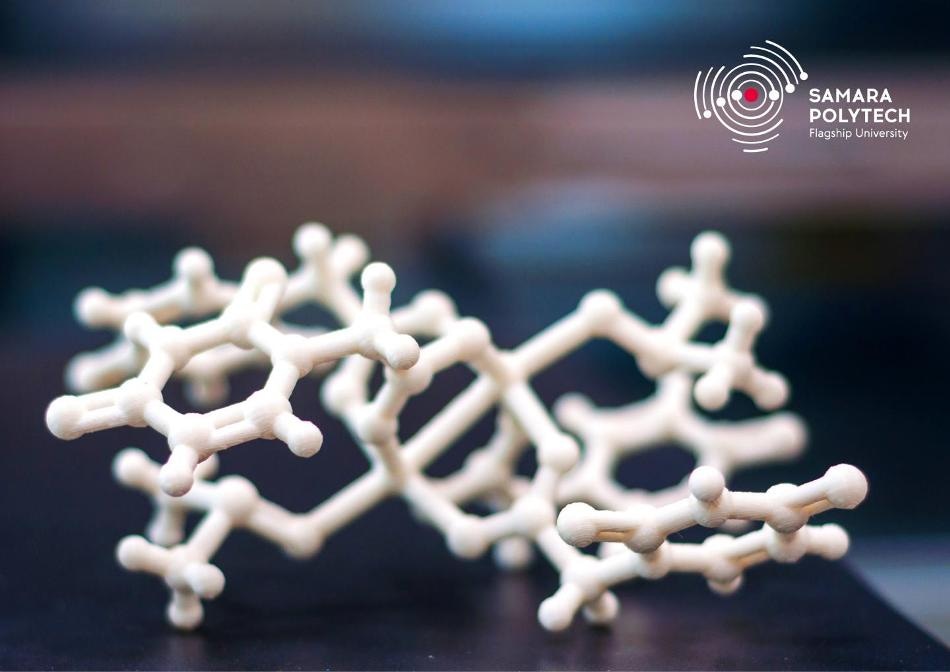Aug 14 2019
The first-ever metal-organic polymeric materials, or metal-organic frameworks (MOFs), have been synthesized under the guidance of Eugeny Alexandrov—head of the laboratory for the synthesis of new crystalline materials of the Samara Center for Theoretical Materials Science (SCTMS) of the Samara Polytech and candidate of chemical sciences—and Andrei Pimenov, head of the department “Chemistry and Technology of Chemical Compounds of Nitrogen” and doctor of technical sciences.
 New materials resemble an assemblage from a construction kit within which individual molecules and their fragments can be combined in a framework. (Image credit: Samara Polytech)
New materials resemble an assemblage from a construction kit within which individual molecules and their fragments can be combined in a framework. (Image credit: Samara Polytech)
Latest results of the study have been published in the scientific journals Dalton Transactions and Chemical Science of the publisher The Royal Society of Chemistry, as well as Crystal Growth & Design of American Chemical Society.
The obtained porous metal-organic frameworks draw the attention of researchers by the fact that they display record sorption characteristics concerning different volatile substances, liquids, gases, and ions. This is a type of crystalline sponge, but with exceptional parameters. One gram of such a substance has a pore surface area similar to the area of a football field.
Furthermore, they are able to integrate several beneficial properties: luminescence, catalytic activity, electrical conductivity, magnetic susceptibility, and much more. This allows advanced materials to be created for detectors and sensors on their basis, for storing and processing information, nanoreactors, and photocells.
We have a real chance to develop in Samara the technologies for the manufacture of new materials for energy-efficient sorption separation of oil products and industrial gases, as well as for highly selective and highly sensitive chemical sensors.
Eugeny Alexandrov, Head of the Laboratory for the Synthesis of New Crystalline Materials, SCTMS, Samara Polytech
Development of the various facets (sorption, mechanical stability, electrical conductivity, structure design) of this topic has already been supported by the research grants of the RSF, RFBR, and the presidential grant. Furthermore, applications were sent to two scientific foundations and an industrial partner is being searched for.
Over 20 crystal samples of both known and new, not yet explored, porous, and electrically conductive metal-organic coordination polymers have been synthesized by the candidate of chemical sciences Andrei Sokolov, Viktor Parfenov, and student Ekaterina Vaganova in the laboratory of the University. These are materials possessing good stability, high porosity, and sorption ability of the components of air, natural gas, gaseous, and liquid industrial emissions.
Together with the staff of the Department of Physical Chemistry and Chromatography of Samara University (the head of the department, Professor Lyudmila Onuchak), there is a plan to manufacture composite materials on their basis and explore the surface topography of these composites, their ability to hold different substances on the surface—for example, components of natural gas.
Together with the head of the Scientific and Educational Center of Medical Diagnostic Microsystems at the Institute for Innovative Development of Samara State Medical University Andrei Sokolov, there is a plan to develop chemical sensors and cathode materials for metal-ion batteries based on MOFs.
I consider these first syntheses of MOFs as a benchmark event in the development of our research center. Our center is very young: we are officially approved as a university unit at the very end of 2017. At the same time, in such a short period of time, with the support of the Polytech, we were able to do what we had long dreamed of—to begin the practical implementation of our theoretical forecasts of new crystalline substances and materials in our laboratory.
Vladislav Blatov, Professor and Director of SCTMS, Samara Polytech